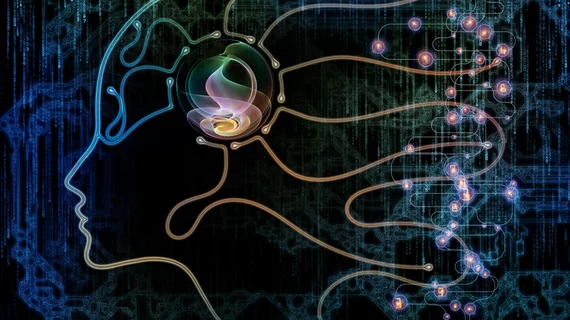‘Hive mind’ AI connects groups of radiologists, outperforms specialists or AI alone
A small group of experienced radiologists, connected by machine learning algorithms that enable them to work together as a “hive mind,” can achieve higher diagnostic accuracy than the individual radiologists or the machine learning algorithms alone, according to new research presented on Sept. 10 at the Society for Medical Imaging Informatics in Medicine (SIIM)’s Machine Intelligence in Medical Imaging conference.
The technology, dubbed Artificial Swarm Intelligence (ASI) or Swarm AI, enables networked human groups to combine their individual insights using AI algorithms in real time, and collaborate to determine an optimal patient diagnosis.
“While prior studies have shown that ASI technology can amplify human accuracy in predictive tasks such as predicting sports and forecasting financial markets, no prior research has tested the use of distributed swarm-based technologies for medical diagnosis,” wrote lead author Matthew Lungren, MD, of the Stanford University Medical School in California, and colleagues.
To test their method, Lungren and colleagues from the Stanford University School of Medicine and Unanimous AI linked a group of eight radiologists using ASI. The radiologists were stationed in separate locations and were tasked, as a unified system, with diagnosing a set of 50 chest x-rays for the presence of pneumonia.
Data was collected for individual diagnoses and for diagnoses made by the group as a real-time ASI system. Additionally, diagnoses were also collected and compared with machine learning program Stanford University School of Medicine-developed ChexNet system, which in prior studies, has been shown to outperform individual human radiologists in pneumonia screening.
The results showed ASI reduced the error rate by 33 percent, compared to traditional diagnoses by individual radiologists alone. Additionally, ASI was 22 percent more accurate in binary classification than the ChexNet system.
“Diagnosing pathologies like pneumonia from chest x-rays is extremely difficult, making it an ideal target for AI technologies,” Lungren said in a prepared statement issued by Unanimous AI. “The results of this study are very exciting as they point towards a future where doctors and AI algorithms can work together in real-time, rather than human practitioners being replaced by automated algorithms.”
The researchers noted ASI may be instrumental in developing and generating more accurate “ground truth” datasets for the training of systems like ChexNet.
“Overall this study suggests that swarm-based technologies are quite promising for use in medical diagnosis, enabling small groups of medical professionals to combine their insights in real-time under software moderation and thereby achieve diagnostic accuracies that significantly exceed the accuracies of individual human practitioners as well as software-only solutions,” the authors concluded.

